Making Chinese dumplings from scratch can be easy and fun! Follow this guide to learn about the dough, filling, folding techniques, cooking methods, dipping sauces and more. A tutorial video is included.
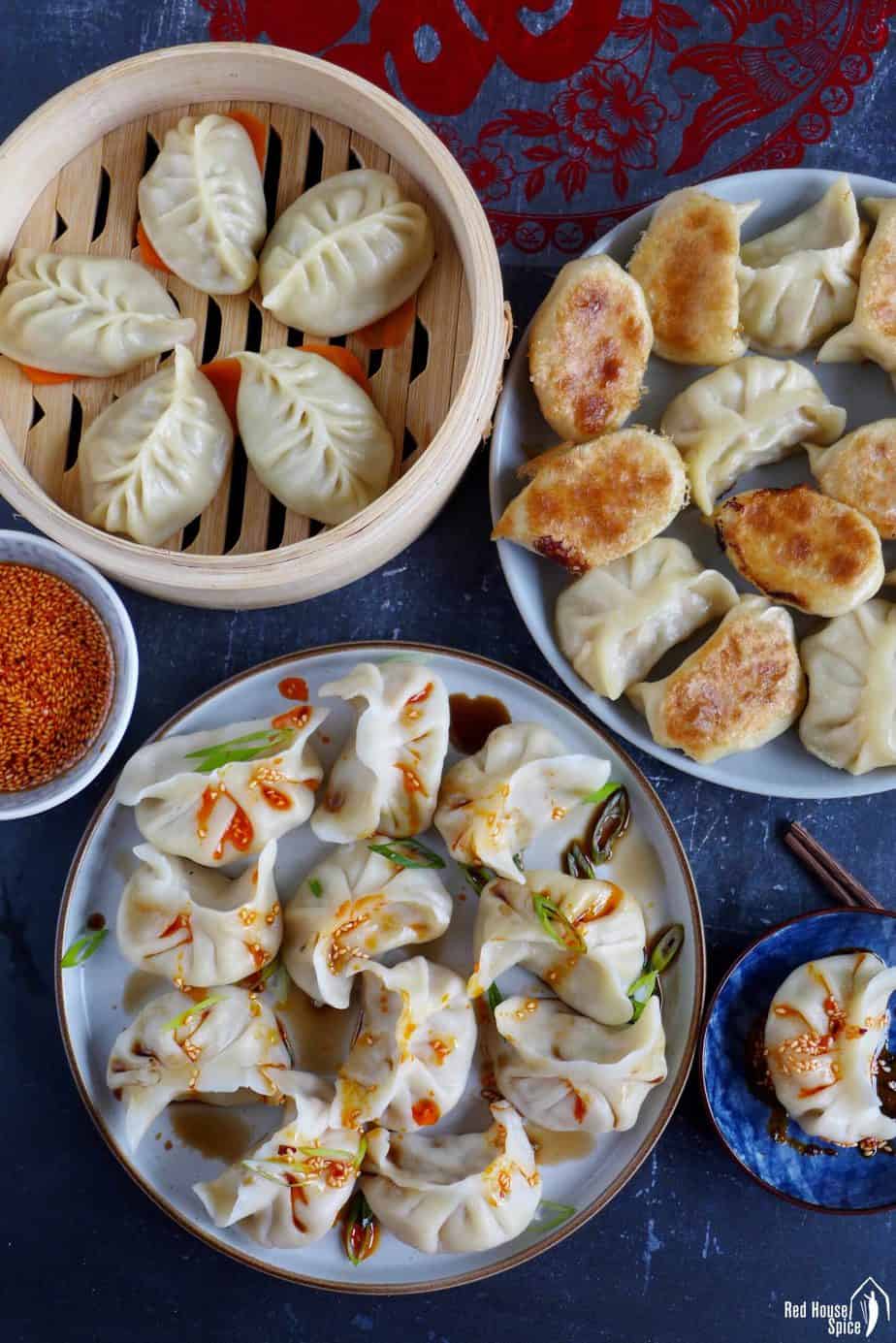
Chinese dumplings (Jiaozi, 饺子) are stuffed parcels made of unleavened dough and savoury fillings consisting of minced ingredients like meat, egg, tofu, or vegetables. They can be boiled, pan-fried or steamed.
A much-loved delicacy and a symbol of unity, Chinese dumplings are one of the best foods to prepare with family and friends. I hope this ultimate how-to guide provides all the information you need for a successful outcome.
Note: Don’t confuse dumplings with wontons, which use square, thinner wrappers and are considered a distinct food in Chinese cuisine.
Dough
Only two basic ingredients are required to make Chinese dumpling dough: Flour and water. Surprisingly simply, right? Making dumpling wrappers from scratch is considered the norm in China. If you’ve never tried homemade wrappers, follow my guide and give it a go. Highly likely you’ll stop buying ready-made ones in the future.
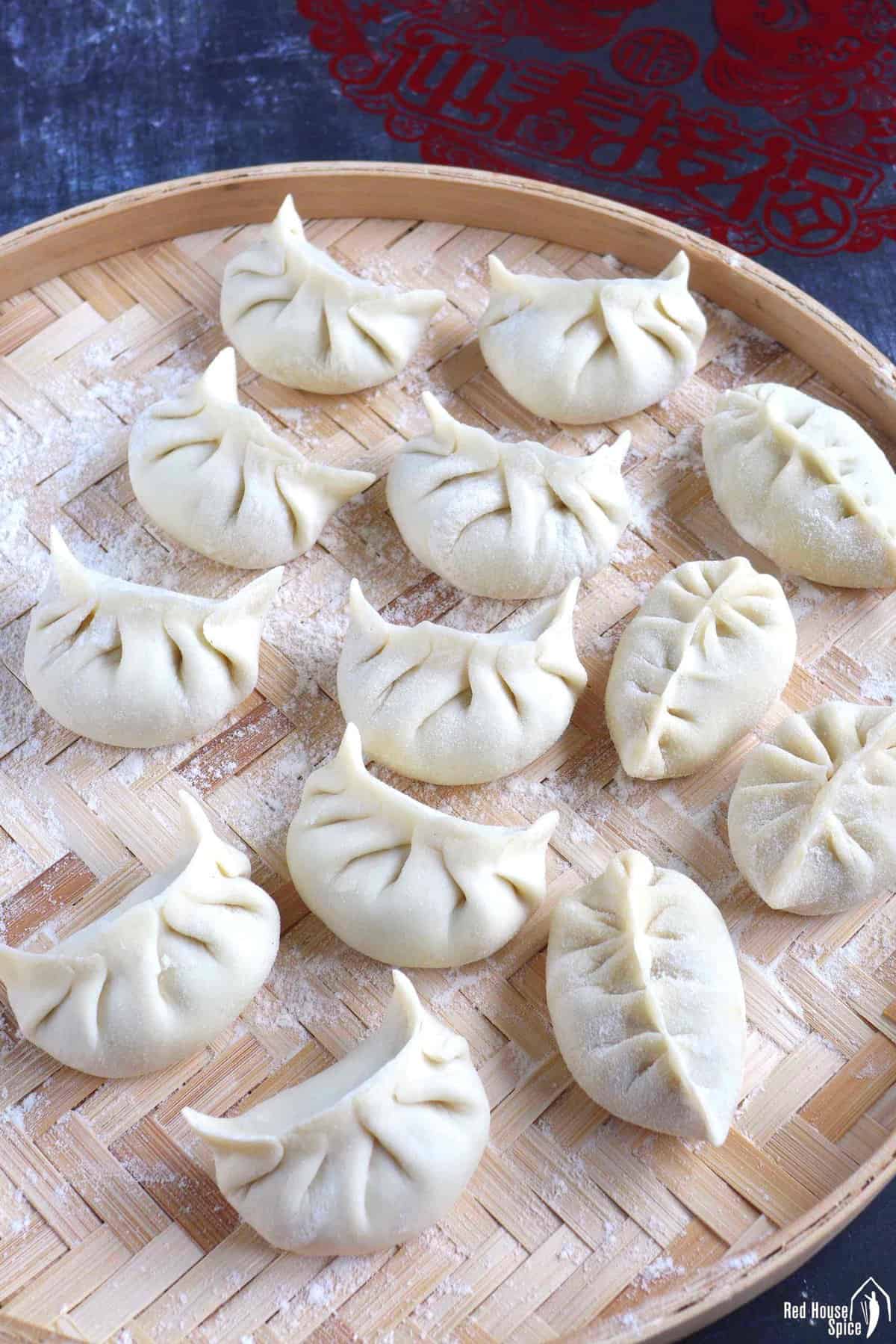
In this post, I’ll introduce the regular dumpling wrapper which works for all purposes. For more in-depth explanation and other varieties, please read my Wrapper Guide.
Flour type
All-purpose (plain flour) works very well for dumpling wrappers. It’s possible to use high gluten bread flour, but you might find the cooked wrappers a little too chewy.
Special dumpling flour available in Chinese/Asian shops produces a smoother texture and whiter appearance as it’s heavily processed and bleached.
Flour-water ratio
Chinese dumping dough needs to be soft enough to be easily rolled out into thin discs but not so soft that it sticks. Generally speaking, the flour-water ratio is about 2:1 by weight (not by volume), e.g. for 250g all-purpose flour, you’ll need 125g-130g water.
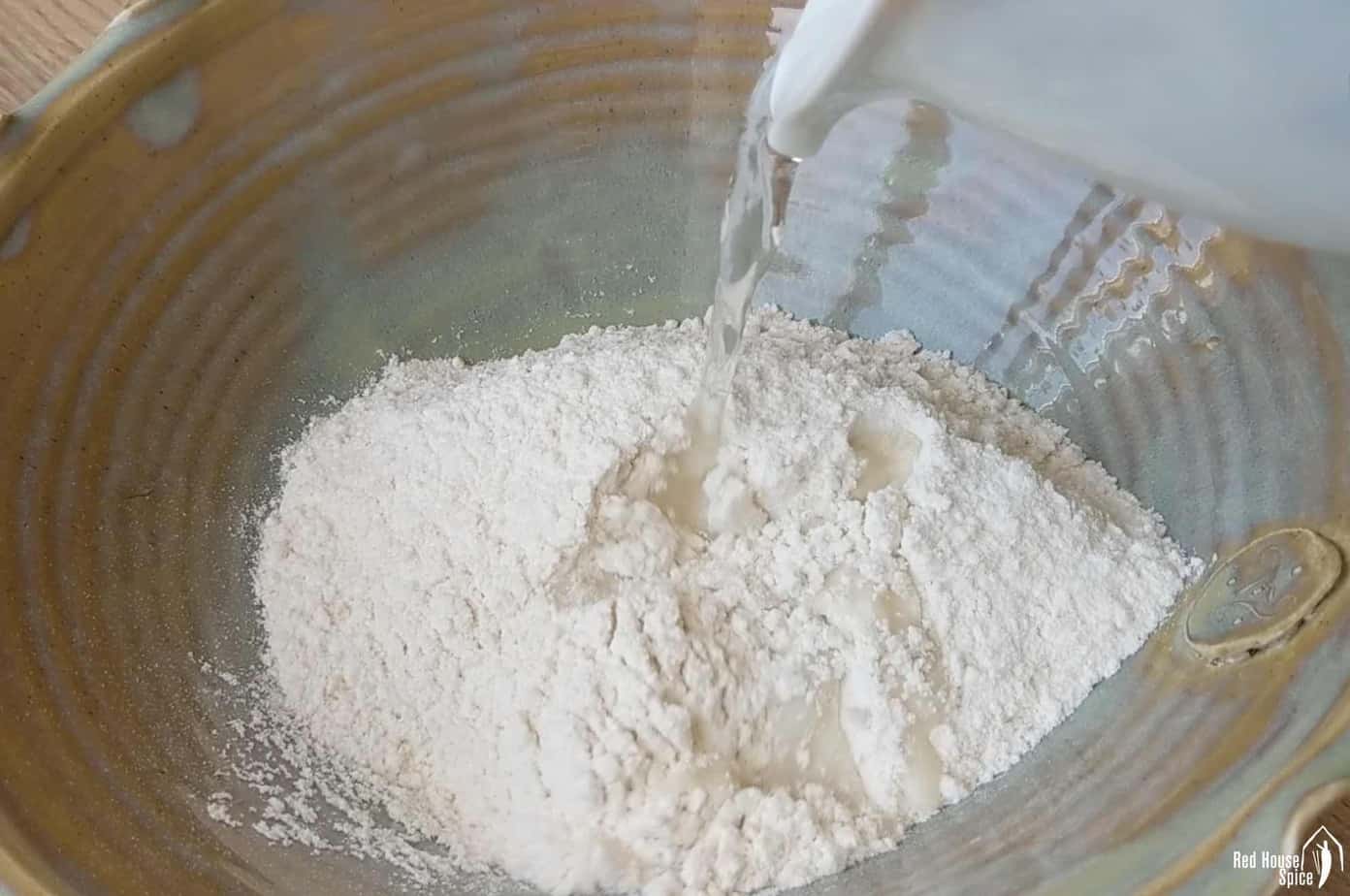
I recommend you weigh the ingredient with a scale if possible as it’s the most accurate. If using a cup to measure, 2 cups of all-purpose flour requires ½ cup+2 teaspoon of water. It’s important that you sift the flour before adding it to the cup, then level it properly.
Please also be aware that the water absorption capacity of flour of different brands may vary. The humidity in the room also affects the ratio slightly. So minor adjustment might be necessary.
Knead & rest
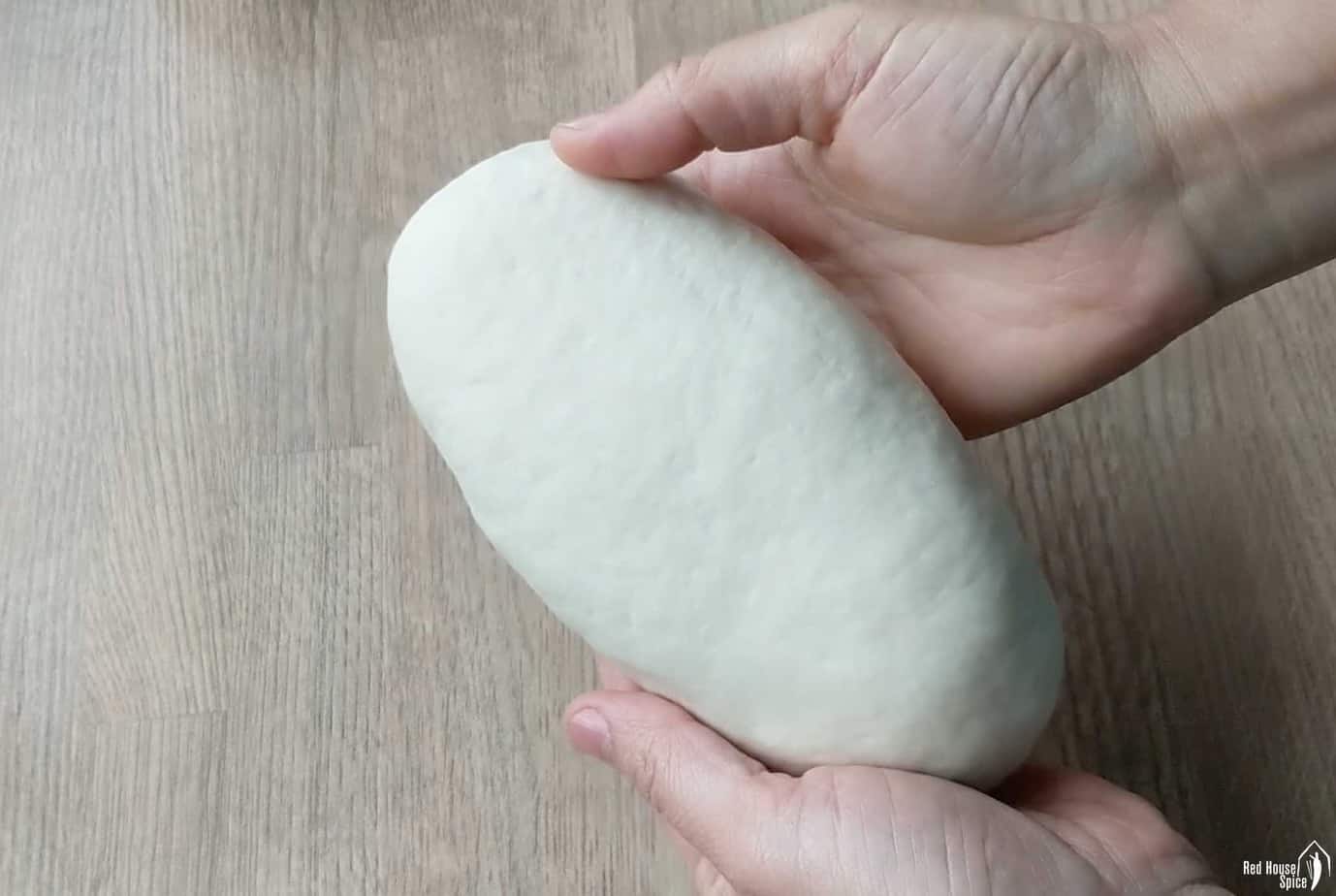
You can make dumpling dough either by hand or in a stand mixer with a dough hook.
- By hand: Combine flour and water to form a rough-looking dough. Rest for 10 min then knead it into a smooth, medium-firm dough. Then leave to rest for a further 30-60 minutes until it becomes soft.
- With a stand mixer: Mix and knead the dough on low speed for about 8 minutes until a smooth dough forms. Leave to rest for 30-60 minutes until soft.
To confirm the readiness of the dough, Chinese cooks would say, “it should be as soft as an earlobe.”
For novice dumpling makers, I think it’s better to make the dough by hand for the first time. This allows you to check the readiness of the dough and to adjust the flour or water if necessary.
Roll wrappers
- Once the dough is well rested, make it into a loop or a few ropes then cut into equal, small pieces.
- Flatten each piece into a round disc with the palm of your hand then roll them into thin wrappers with a rolling pin.
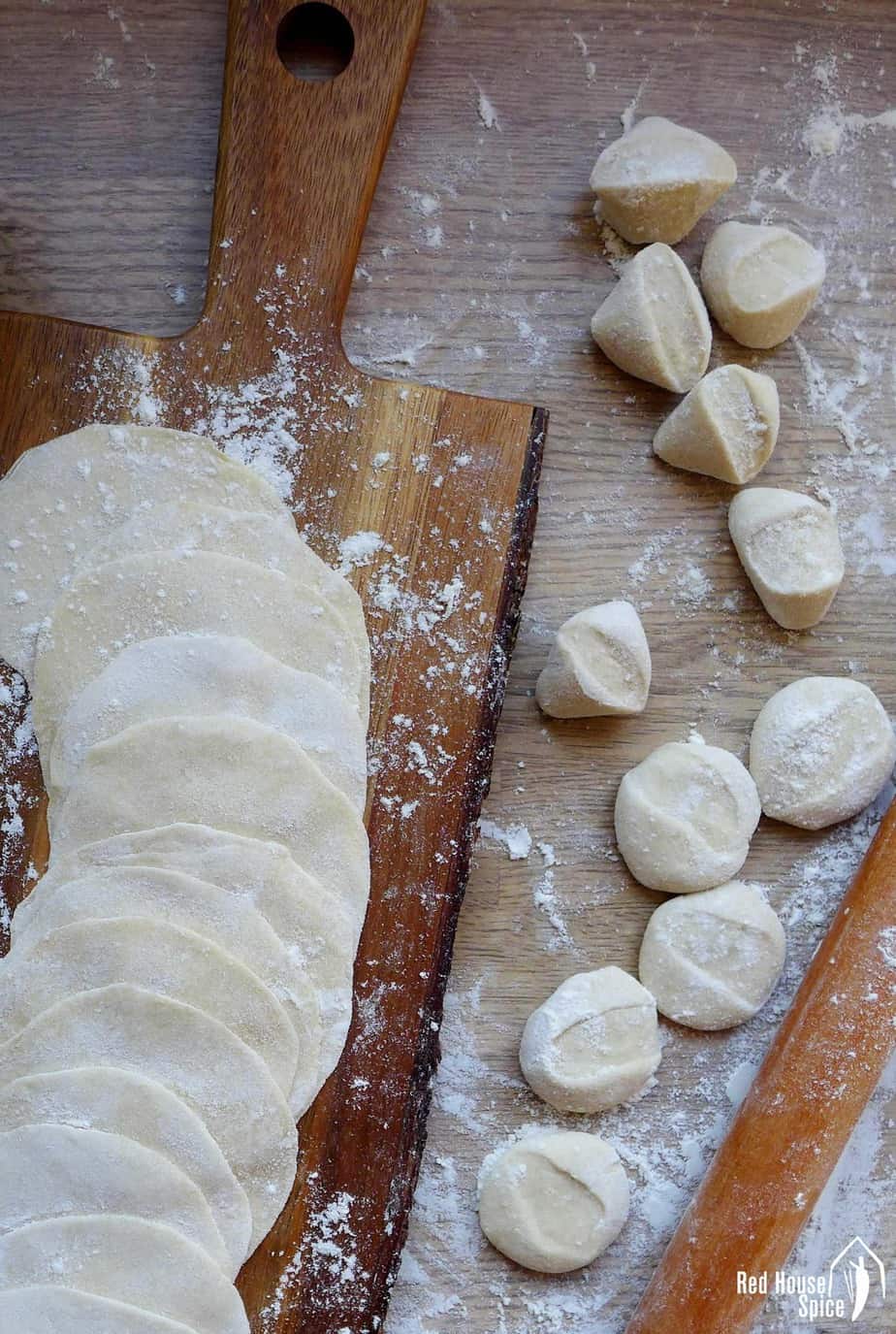
I use a “roll & turn” technique which works efficiently and produces wrappers that are thinner on the edge but slightly thicker in the middles. Perfect for dumpling folding (Please refer to the tutorial video in the recipe card below).
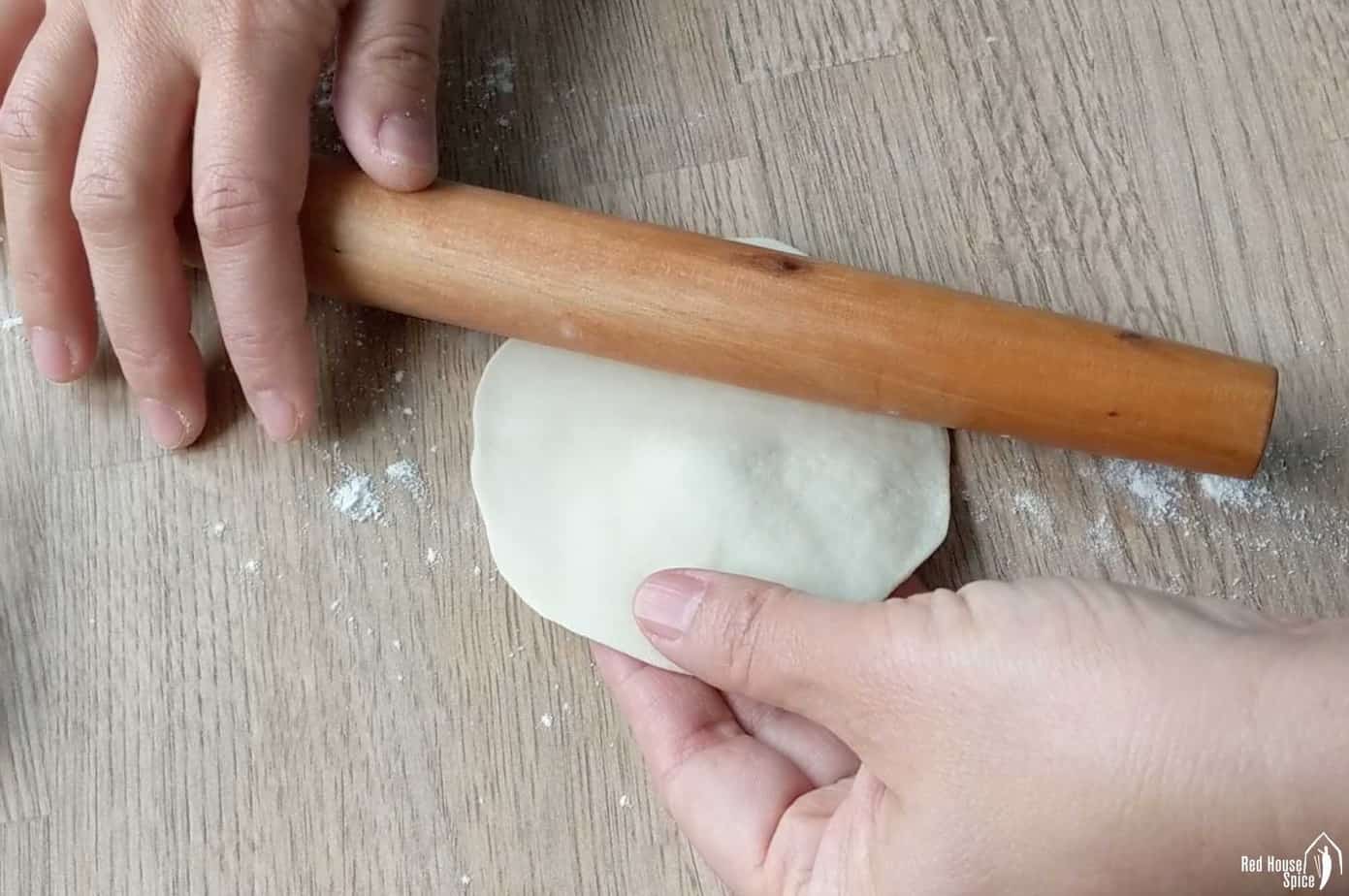
If you find it challenging to roll wrappers one at a time, here is an alternative: Use a pasta machine to roll the dough into a thin sheet. Cut out wrappers with the rim of a wine glass or a biscuit/scone cutter. In this case, slightly reduce the water to make a firmer dough and reduce the resting time by half.
Always remember to cover the unused dough to avoid drying out. Also, if the dough sticks a little to the work surface or the rolling pin, dust with a little flour.
Filling
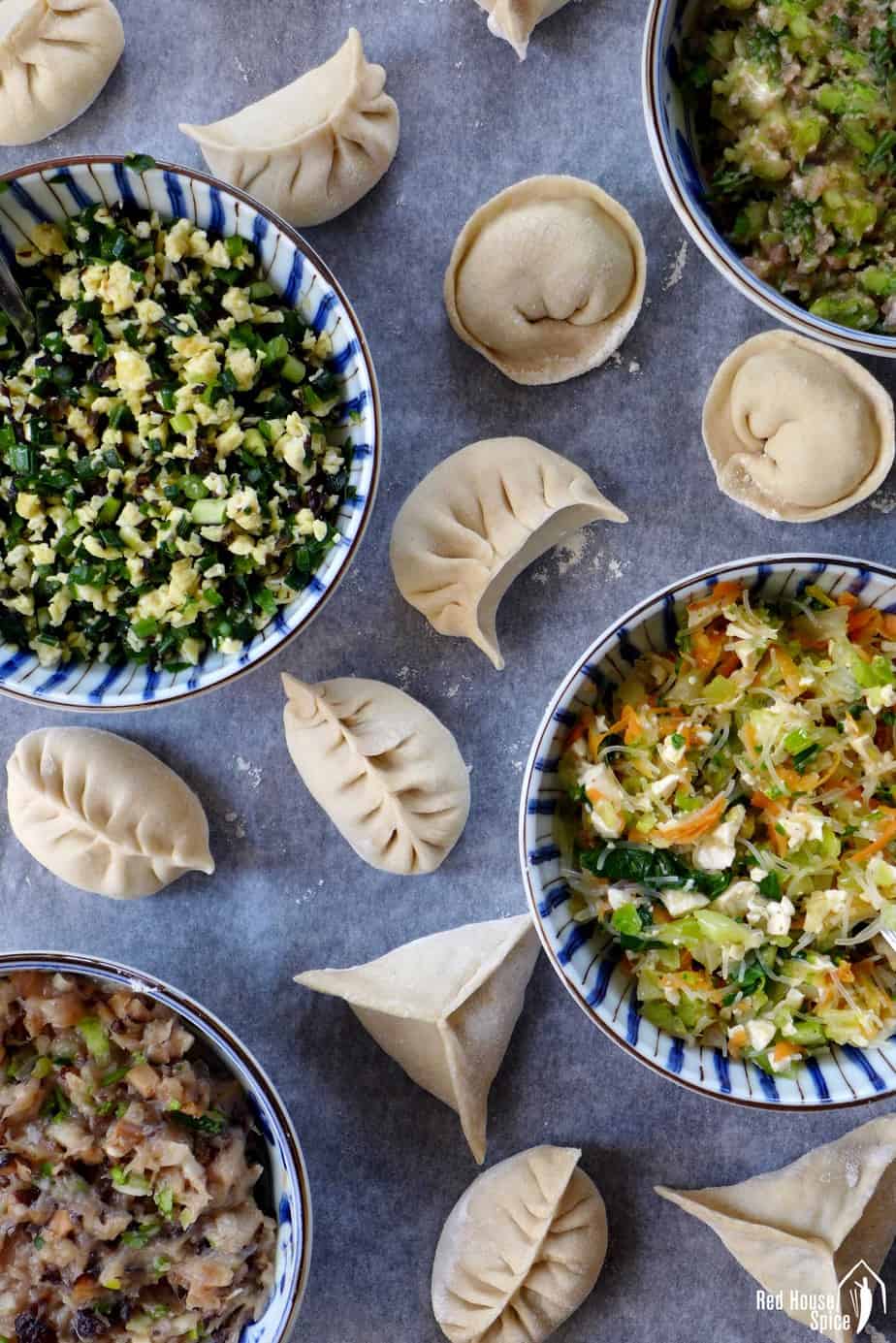
Once you understand a few basic principles, it’s very easy to come up with a delicious dumpling filling by mixing and matching your favourite ingredients. In my post How to Make Great Dumpling Fillings, I’ve shared in-depth information on this subject. Here is a summary of what a good filling should be like:
A nice balance of the ingredients
This means a good mix of protein and vegetables. Together with the carbohydrate from the wrappers, dumplings create a nutritiously balanced all-in-one meal.
The protein can be any type of meat (pork, beef, lamb, chicken, turkey, fish, seafood), eggs and soy-based ingredients like tofu.
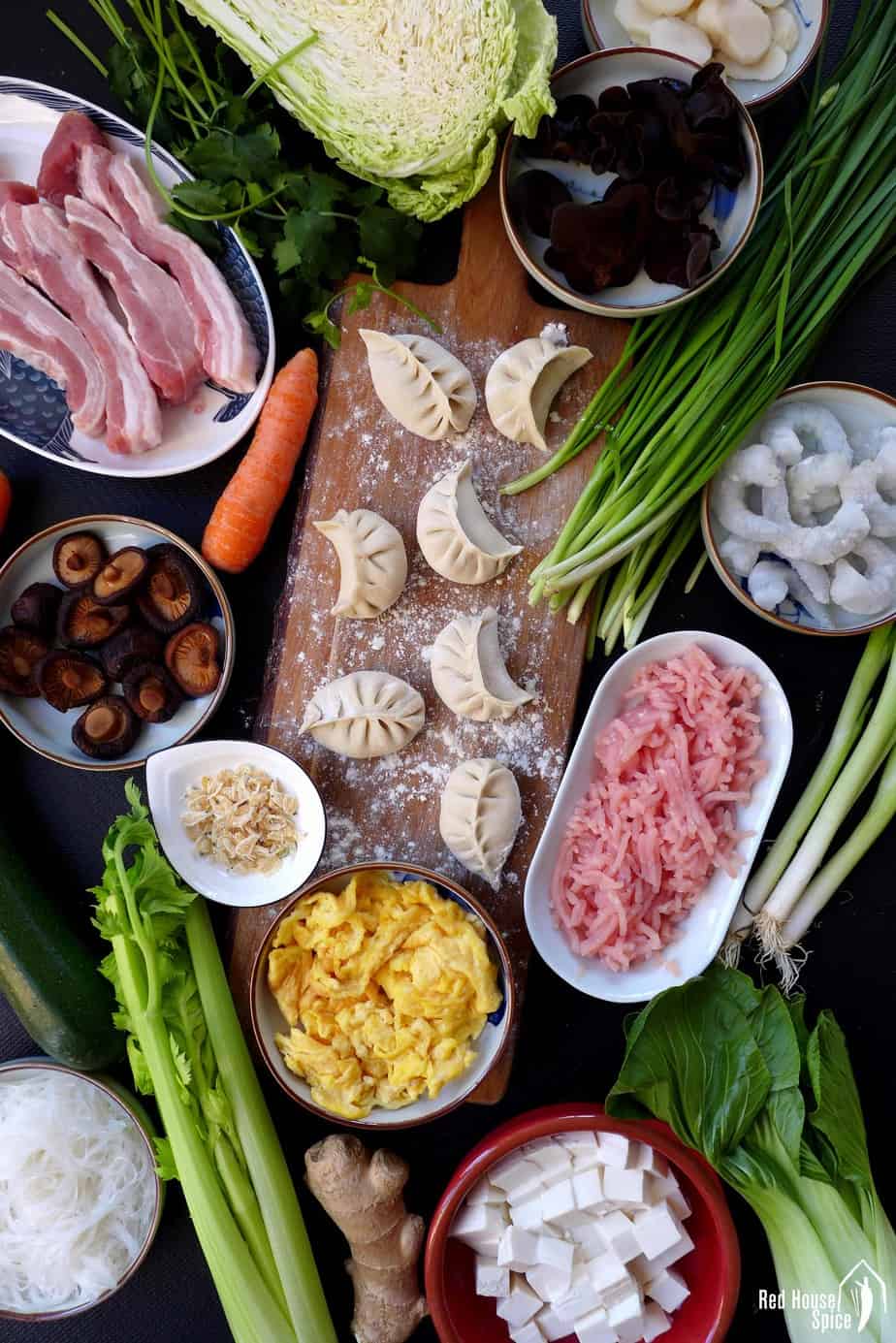
A great combination of flavours
Apart from the natural flavours of the main ingredients, condiments and aromatics are added to the filling.
The common seasonings include soy sauce, oyster sauce, ground Sichuan pepper, Chinese five-spice powder, white pepper, sesame oil, salt, sugar, etc. Finely chopped scallions and minced ginger also add great flavour.
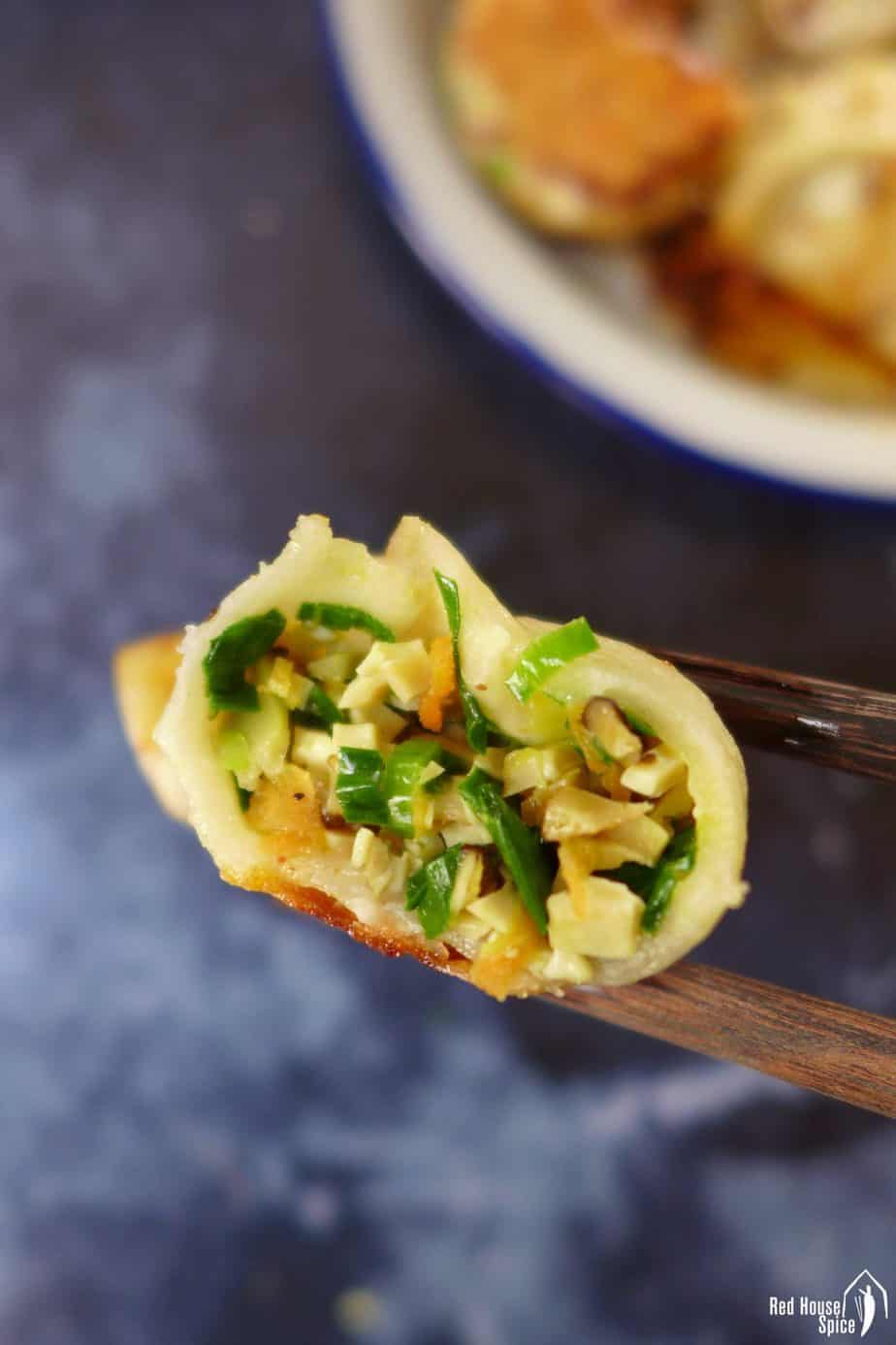
A moist texture but not overly wet
For meat-based fillings, you can achieve the goal by using meat with high-fat content, adding a little oil or incorporating water/stock into the meat.
For vegetarian dumplings or vegan dumplings, the problem often goes the other way. You can apply these method to fix a “wet” filling:
- Squeeze out excess water after chopping the vegetables;
- Add an ingredient that’s good at absorbing moisture, such as mung bean vermicelli, scrambled eggs, etc.
Pleating
Do you find folding Chinese dumplings intimidating? In fact, it’s not that difficult and can be great fun, especially if you use homemade wrappers that don’t need to be wet with water and are so pliable that you can make your dumplings into many different shapes.
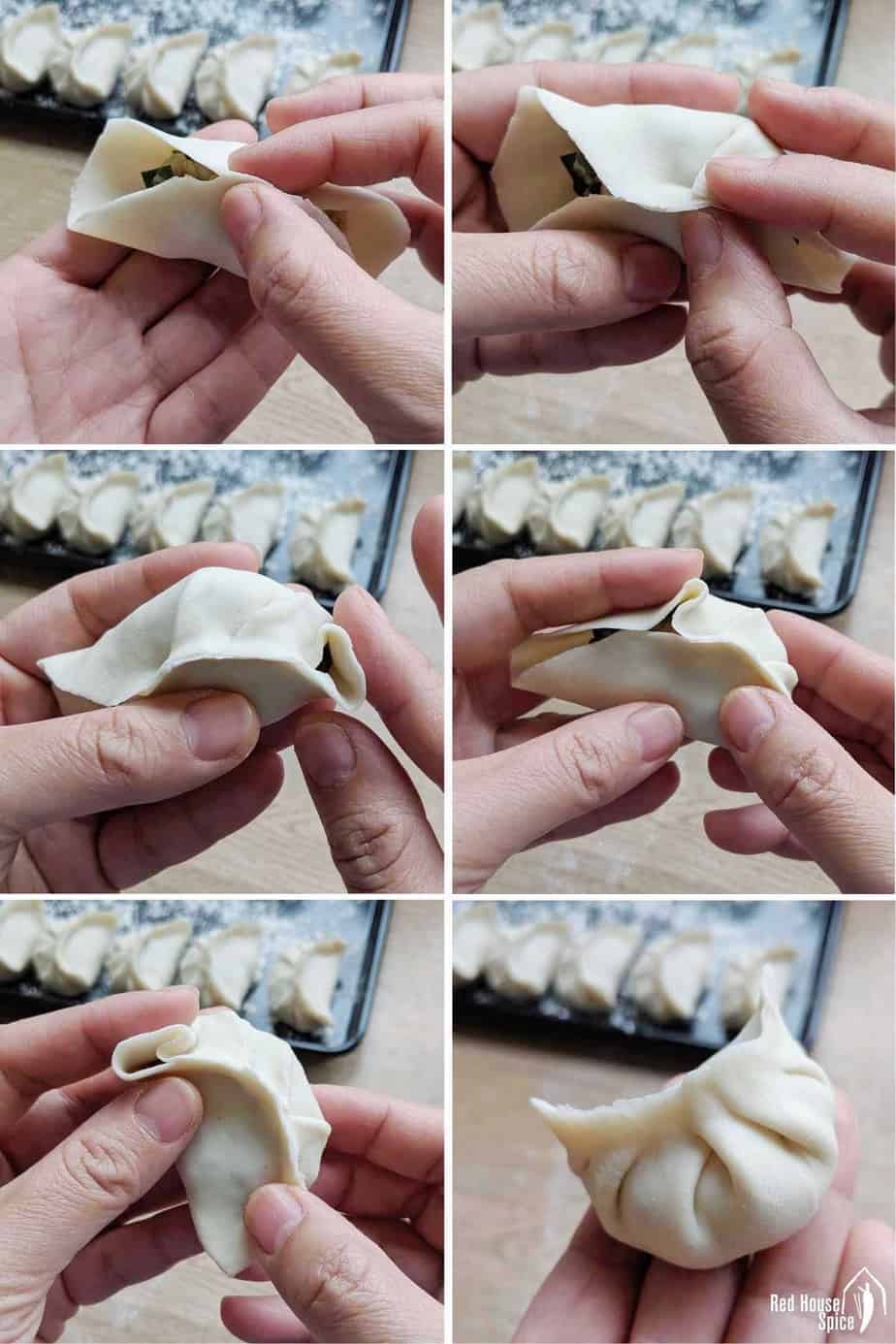
The traditional Chinese dumplings are half-moon shaped. As shown in the image above and the video in the recipe card below, it’s quite simple to accomplish.
- Place a spoonful of filling in the middle of a wrapper.
- Fold the wrapper and pinch the top of the rim to seal.
- Make 2-4 pleats from each end. Then press all around the edge to completely seal .
If you’re more adventurous and wish to learn other possibilities to assemble dumplings, I encourage you to check out my post on folding techniques which demonstrate ten patterns covering all levels of skill in an easy-to-follow tutorial video. I’m sure you’ll enjoy watching it (Many of my readers found it mesmerising)!
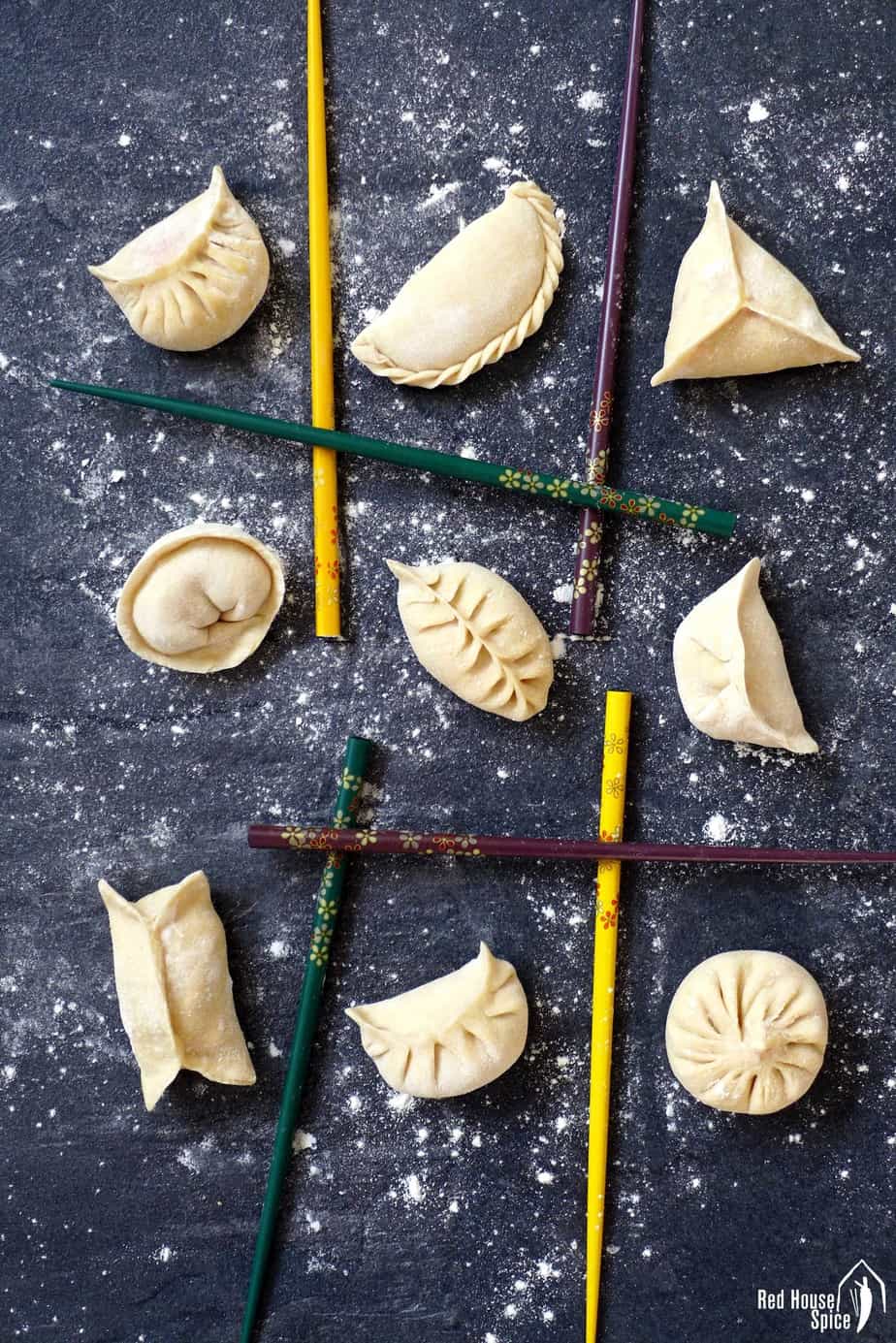
No matter which method you prefer, I suggest you follow a few rules for the best outcome:
- If you are going to boil the dumplings, make sure they’re well sealed to avoid broken skin and leaking filling.
- Don’t overly flour homemade wrappers. While rolling out the wrappers, you might need to dust the dough with flour to avoid sticking. However, if you sprinkle excess flour, you would find it difficult to seal.
- Choose the pattern that suits a particular cooking method. If pan-frying or steaming, the shape of the dumplings will remain more or less the same after cooking so you may wish to try out some fancy patterns. Whereas if boiling, choose a simple look as it’s less likely that the dumplings will retain a perfect look after cooking.
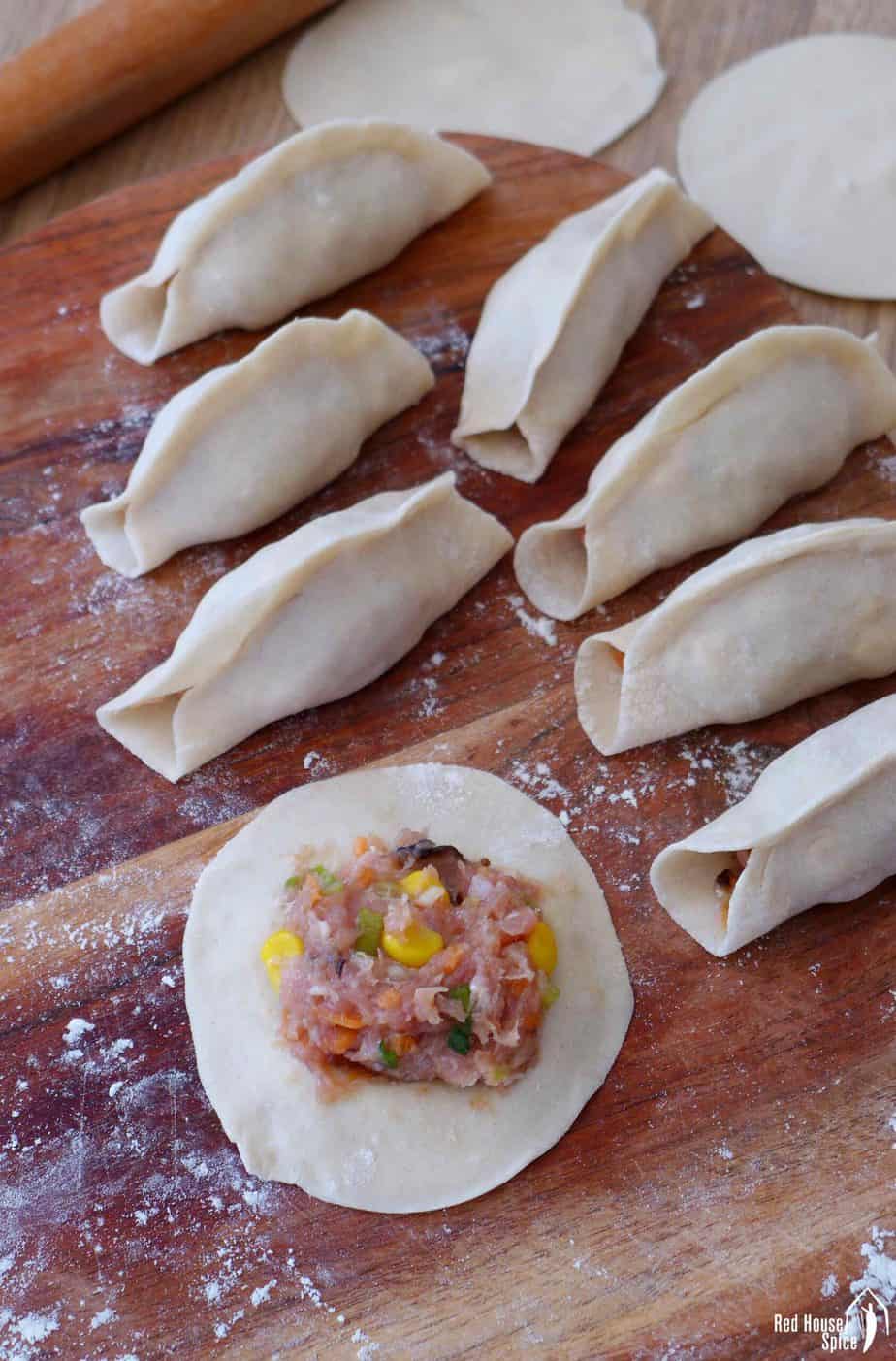
By the way, I’ve also introduced a super simple, fool-proof folding technique (see image above) in the recipe for Chicken potstickers which works perfectly for pan-fried dumplings.
Now you’ve had all the dumplings assembled, let’s move on to the next step: Cooking dumplings in three ways. Read on to find out how each method is executed.
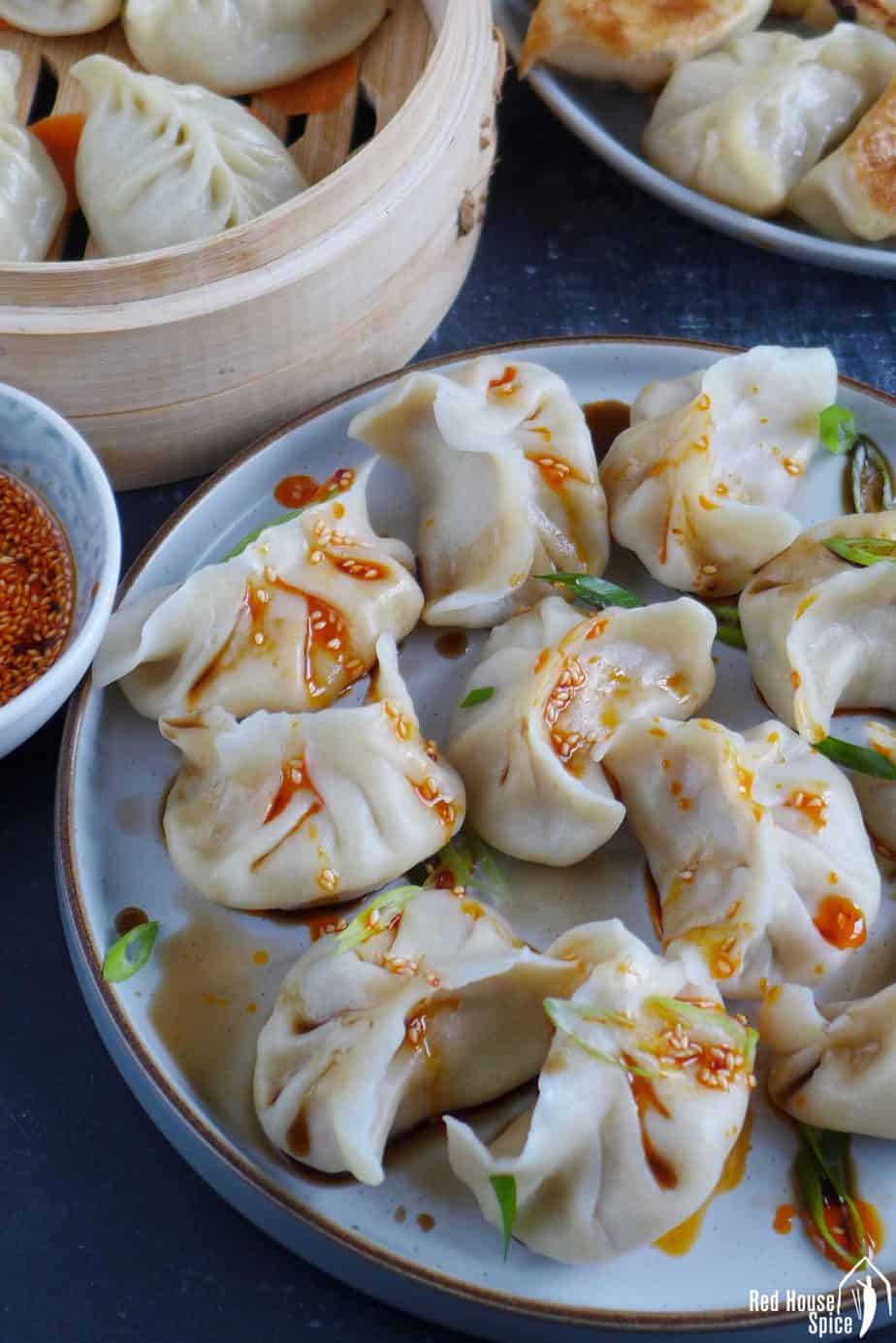
Boiling
Although not very popular in restaurants in the West, boiled dumplings are in fact the most popular form in Chinese households. It’s my favourite since childhood as I love the soft yet slightly chewy texture and its non-greasy taste.
- Use a large pot with plenty of water. To decide how many to cook at once, here is my trick: if the dumplings are placed in a single layer, they shouldn’t be much bigger than the surface of the water.
- Don’t slide in dumplings until the water is fully boiling. Remain high heat.
- How to know they’re cooked? Use the traditional Dian Shui (点水) method: Once the water comes back to a full boil, add a little cold water to calm it down. Repeat the procedure another two times (Remember to cover the pot with a lid each time after you add water). Then your dumplings will be fully cooked!
- Drain and rinse the dumplings under cold water briefly. This is to remove excess starch and minimize the possibility of sticking (skip this procedure if you are going to serve the dumplings in a soup dish.
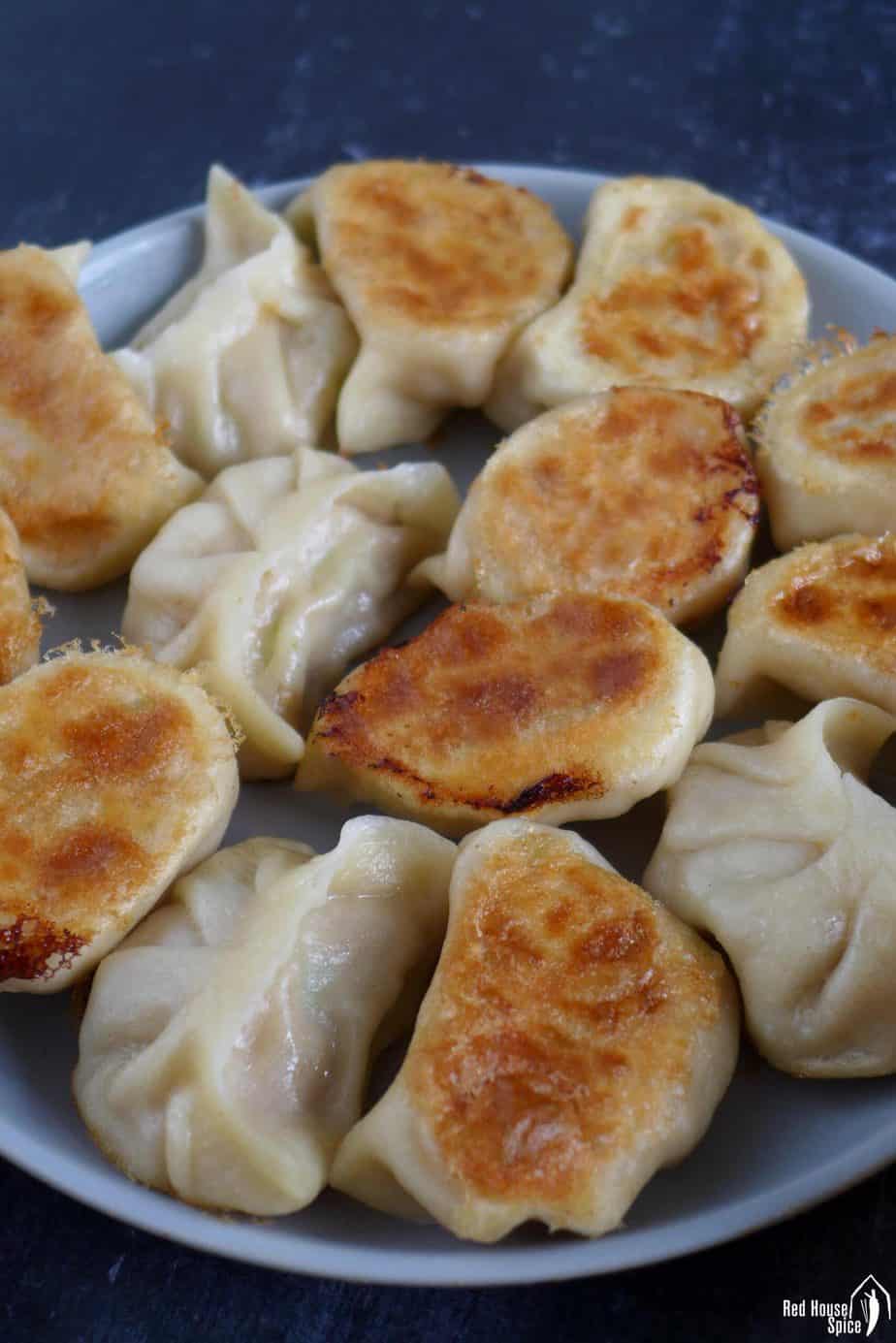
Pan-frying
Pan-fried dumplings stand out for their golden, crispy base. It’s very simple to cook following the “fry-steam-fry” procedure.
- Firstly, heat a little oil over high heat then add the dumplings. Gently move the pan back and forth to ensure each dumpling is in touch with the oil.
- Once the base of the dumplings becomes golden, pour in cold water (enough to cover ⅓ of the dumplings). Quickly cover with a lid. Leave to steam over high heat.
- When the water evaporates completely, cook for another 30-60 seconds to crisp up (be careful not to burn though).
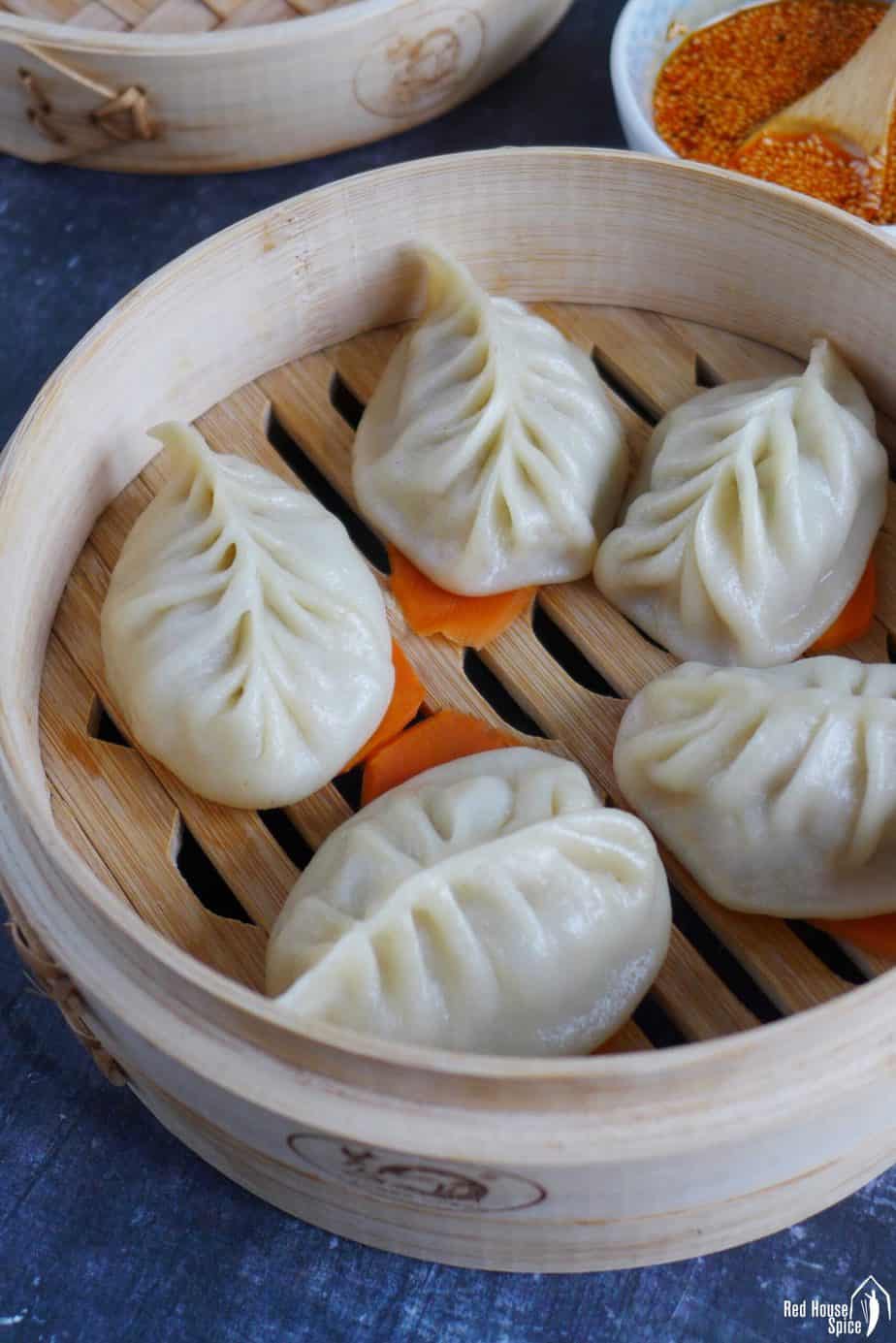
Steaming
Steaming is the easiest of all three methods as it requires minimum attention and effort. In Cantonese style dim sum restaurants, steamed dumplings are one the most popular dishes. Here are a few tips for this method.
- To prevent the dumplings from sticking to steamer baskets, I like laying a piece of thinly sliced carrot under each dumpling. You may also use parchment paper or brush a thin layer of oil if using metal/plastic steamers.
- Bring water to a full boil in a pot/wok, then place in the steamer baskets. Please feel free to stack up 2-3 baskets and cook all at once.
- Count for 10 minutes from this moment on then they’ll be ready to be tucked in.
Serving
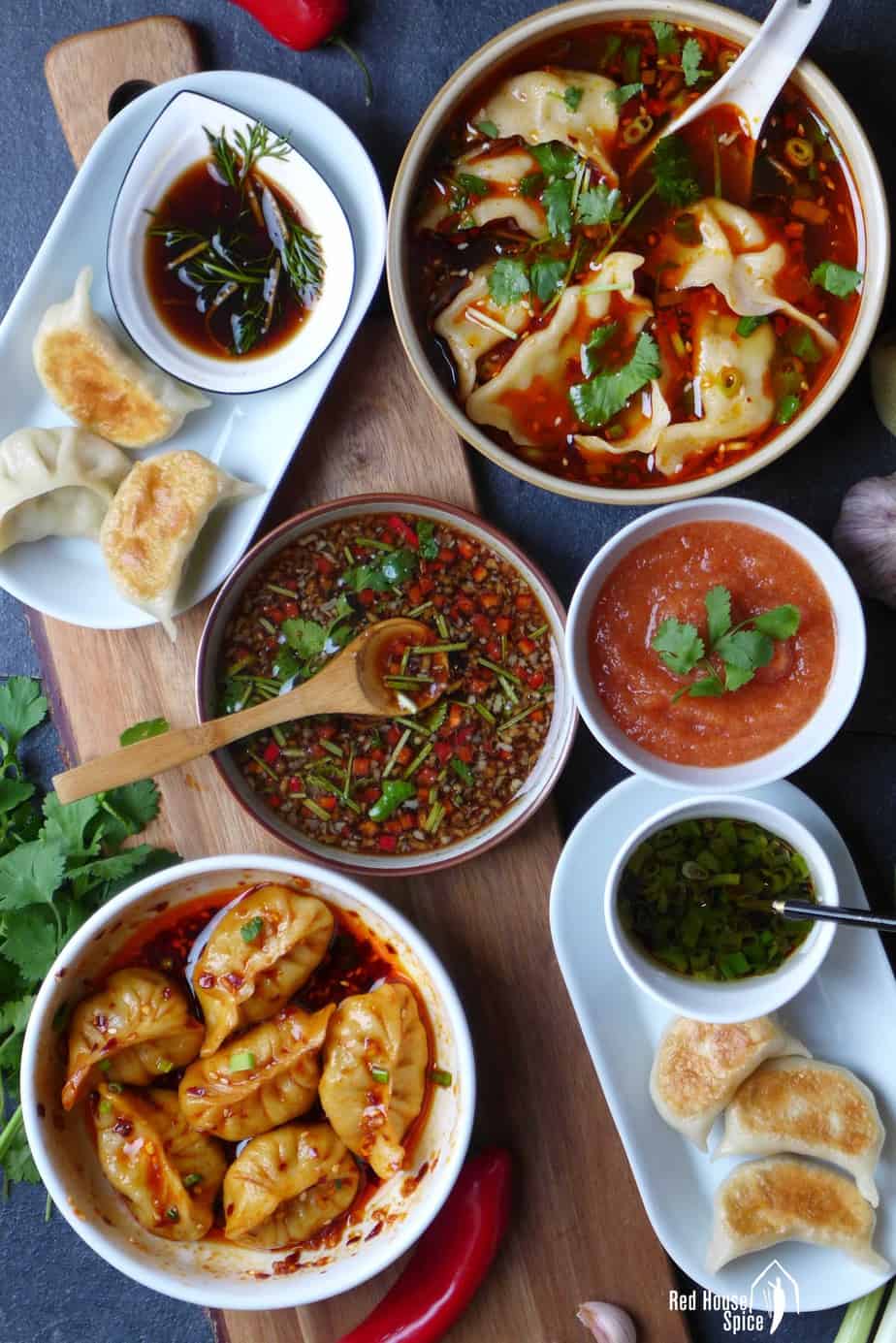
While waiting for the dumplings to cook, you may prepare a sauce to serve them with. I’ve shared a separate blog post Dumpling Sauces which shows six different ways to season dumplings. Alternatively, simply mix Chinese black rice vinegar and a dash of Homemade Chili Oil (Haven’t made this yet? I highly recommend you give it a try!).
It’s not at all compulsory to have a sauce at the side. I sometimes like eating dumplings plain to fully enjoy the flavour of the filling. You might like this way too.
Storage
Freeze uncooked dumplings
Chinese dumplings are my favourite food to keep in the freezer. They’re so handy to have so I really encourage you to make a big batch if time permits. Here is how you freeze them properly:
- Lay uncooked dumplings on a tray (dusted with flour or lined with parchment paper) in a single layer. Make sure they’re not touching each other.
- Keep in the freezer until they’re fully frozen. Then transfer them into airtight plastic bags. Consume within three months.
Cook frozen dumplings
No matter how you wish to cook them, frozen dumplings don’t need to be defrosted beforehand. If boiling or pan-frying, follow the same instructions explained above. If steaming, prolong the cooking time by a couple of minutes.
FAQs
A: You can use one of the following methods: Replace about ¼ of the flour with corn starch, or make a hot water dough (instructions found in the recipe for Soup Dumplings).
A: If the dough appears sticky, add a little more flour and knead it in until well combined. If the dough is too firm, knead it with wet hands to gradually increase its hydration. Or, just leave it to rest longer. The dough will become softer and softer over time.
A: No. Semi-transparent dumpling wrappers are made with wheat starch. My recipe for Har Gow (Crystal shrimp dumplings) and Steamed Dumplings in Two Ways explains the technique.
A: Yes. You can buy wheat starch specifically labelled as gluten-free to make the semi-transparent dumpling wrappers mentioned above.
A: I use a Chinese rolling pin that has no handles and is about 3cm (1.2 in) in diameter. The length of the pin doesn’t matter too much but it shouldn’t be so long that it’s awkward to work with. It can be either straight or slightly tapered.
A: Regular dumpling wrappers are usually around 8cm (3.1in) in diameter.
A: You may use natural ingredients, such as spinach, carrot, purple cabbage, etc., to dye the dough. Instructions can be found in my post on Colourful Dumplings.
A: It’s because the dough hasn’t rested for long enough or it has been handled too much right before rolling. Simply leave the dough to rest another 10-20 mins and try again.
A: Homemade wrappers need to be used straight away. Otherwise, freeze them in air-tight bags (dust with flour or place parchment paper in between each one) and defrost them in the fridge before using.
A: No. In most cases, the filling goes into the wrappers raw. There are exceptions though, e.g. for Chinese Chive Pockets, eggs need to be scrambled before mixing with the vegetable.
A: No. Uncooked dumplings need to be cooked straight away. Otherwise, freeze them following the instructions explained in the recipe card below.
A: Here are a few tips: Always dust the surface with flour before placing dumplings on top; Make sure the dumpling filling isn’t overly wet; Never leave uncooked dumplings to sit for an extended period.
A: To create a crispy skirt, you need to replace water with a starchy slurry for pan-frying. Instructions are explained in my recipe for Chicken Potstickers.
A: Although it largely depends on the appetite of individuals, I’d say that the average is around 15.
A: Yes, you can serve boiled dumplings in a soup. Hot & Sour Beef Dumpling Soup is a good example.
A: Pan-fry them with a little oil. Flip over a few times to heat evenly.
📋Recipe
Love this recipe? Please leave a 5-star 🌟🌟🌟🌟🌟 rating in the recipe card below & if you REALLY like it, consider leaving a comment as well!
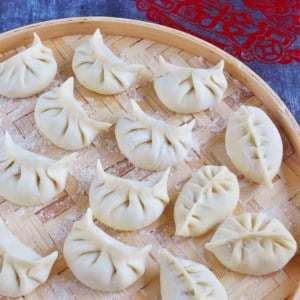
Chinese Dumplings, an Ultimate How-to Guide
Ingredients
For the wrappers
- 250 g all-purpose flour/plain flour - about 2 cups (see note 1)
- 130 g water - ½ cup+2 teaspoon (see note 2)
For the filling
- Beef & Chinese chive filling
- Pork, Chinese chive & water chestnut filling
- Pork & scallion filling
- Pork, carrot & onion filling
- Pork, shrimp & mushroom filling
- Chicken & sweetcorn filling
- Dim sum style shrimp filing (Har gow)
- Soup dumpling (Xiao Long Bao) filling with aspic
- Bok choy, mushroom, vermicelli & egg filling - Vegetarian
- Chinese chive, egg & vermicelli filling - Vegetarian
- Tofu & vegetable filling - Vegan
You also need
- neutral cooking oil - If pan-frying
- 30 slices carrot - if steaming
Instructions
Make the dough
- In a mixing bowl, add water to flour gradually. Mix with chopsticks/spatula until no more loose flour can be seen. Combine and knead into a dough.
- Leave to rest (covered) for 10 minutes then knead again until smooth.
- Cover and rest the dough again for 30-60 minutes until it becomes soft (Chinese cooks would say “as soft as an earlobe”).
- If using a machine: You can also use a stand mixer with a dough hook to make the dough. Knead on low speed for 8 minutes or so until smooth. Cover and rest for 30-60 minutes.
Mix the filling
- While waiting for the dough to rest, mix the filling of your choice following instructions found in its respective recipe.
Roll the wrappers
- Divide the dough into three parts. Roll one part into a rope then cut into 10 equal sections (cover the rest to avoid drying out).
- Press each piece into a small disc with the palm of your hand.
Assemble the dumplings
- Place a spoonful of filling on the wrapper. Seal the wrapper using the techniqe you're most comfortable with. Please refer to the tutorial video below or the methods demonstrated in "Ten Ways to Fold Dumplings".
Cooking option 1: Boiling
- Bring a pot of water to a full boil over a high heat. Gently slide in the dumplings (cook in two batches if using a small pot). Push them around with the back of a spoon to avoid sticking. Cover with a lid.
- When the water comes back to a full boil, add about 120 ml/0.5 cup of cold water then cover.
- Repeat the procedure another two times. When fully cooked, the dumplings should be plump and floating on the surface.
- Transfer the dumplings to a colander. Briefly rinse under tap water (make sure it’s drinkable water). Drain and serve immediately.
Cooking option 2: Pan-frying
- Heat up a little oil over high heat. Place in dumplings (Gently move the pan back and forth to make sure each dumpling is in touch with the oil).
- When the bottom part of the dumplings becomes golden brown, pour in cold water (enough to cover ⅓ of the dumplings). Cover with a lid (remain high heat).
- Uncover when the water evaporates completely. Cook another 30 seconds or so to crisp up.
Cooking option 3: Steaming
- Scatter carrot slices in the steamer baskets, then place dumplings on top (This is to avoid sticking. You may use parchment paper or coat the steamer with a little oil).
- Bring the water to a full boil in a pot/wok, then place the baskets in (you may stack up 2-3 baskets and cook all at once). Cover with a lid then steam over medium heat for 10 minutes.
Serve the dumplings
- Serve the dumplings warm with a dipping sauce if you like. Choose one of the Six Dumpling Sauces or make a simple one by mixing homemade chili oil and black rice vinegar.
Freeze uncooked dumplings
- Place assembled, uncooked dumplings on a tray lined with parchment paper (or dusted with flour). Put into the freezer.
- Once completely frozen, transfer them into an airtight plastic bag/container. Use within three months.
Cook frozen dumplings
- No need to defrost before cooking. If boiling or pan frying, follow the same methods explained above. If steaming, prolong the cooking time by 2 minutes.
Video
NOTES
NUTRITION DISCLOSURE: Nutritional information on this website is provided as a courtesy to readers. It should be considered estimates. Please use your own brand nutritional values or your preferred nutrition calculator to double check against our estimates.


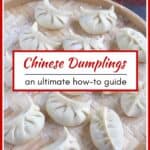

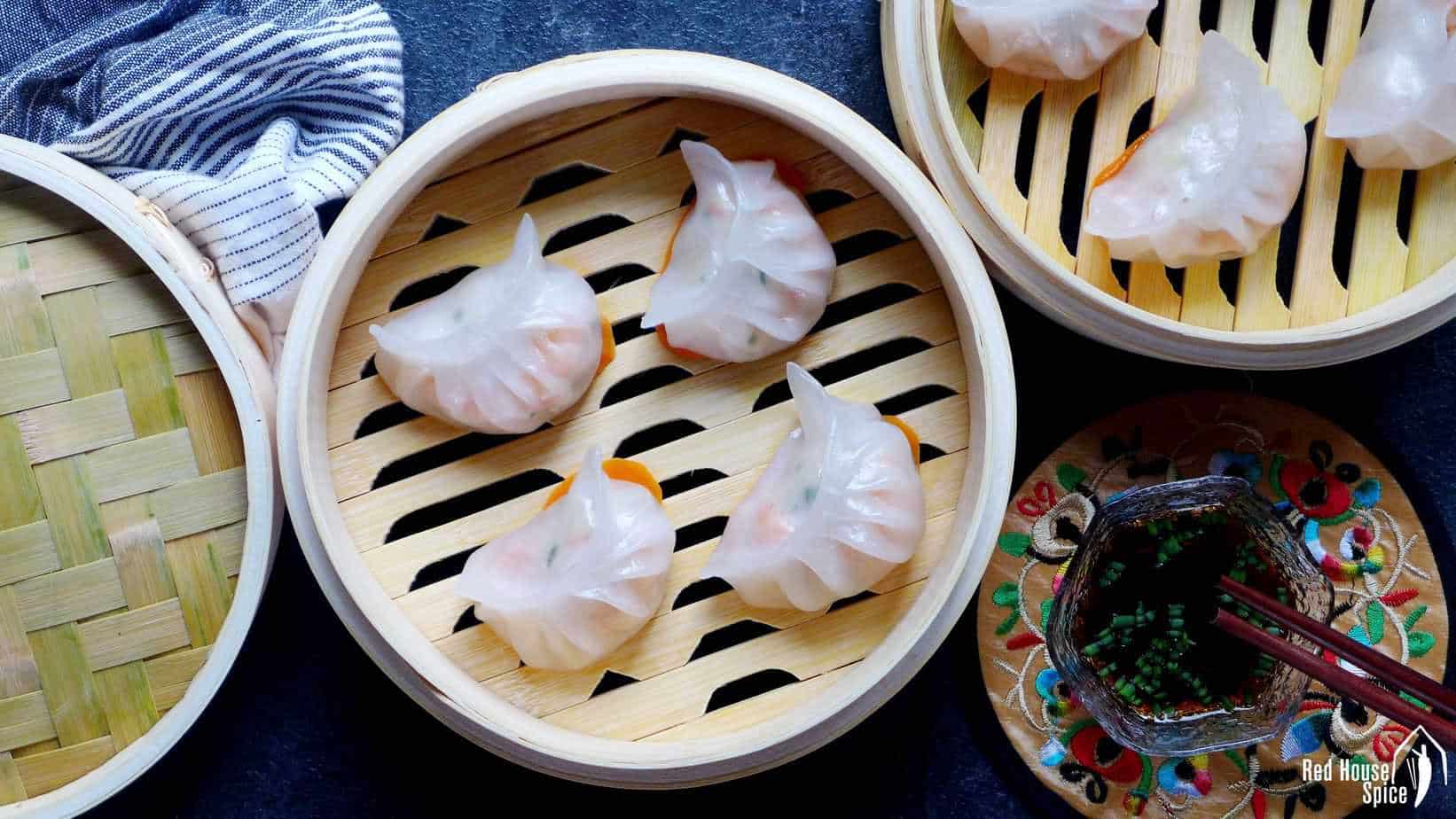
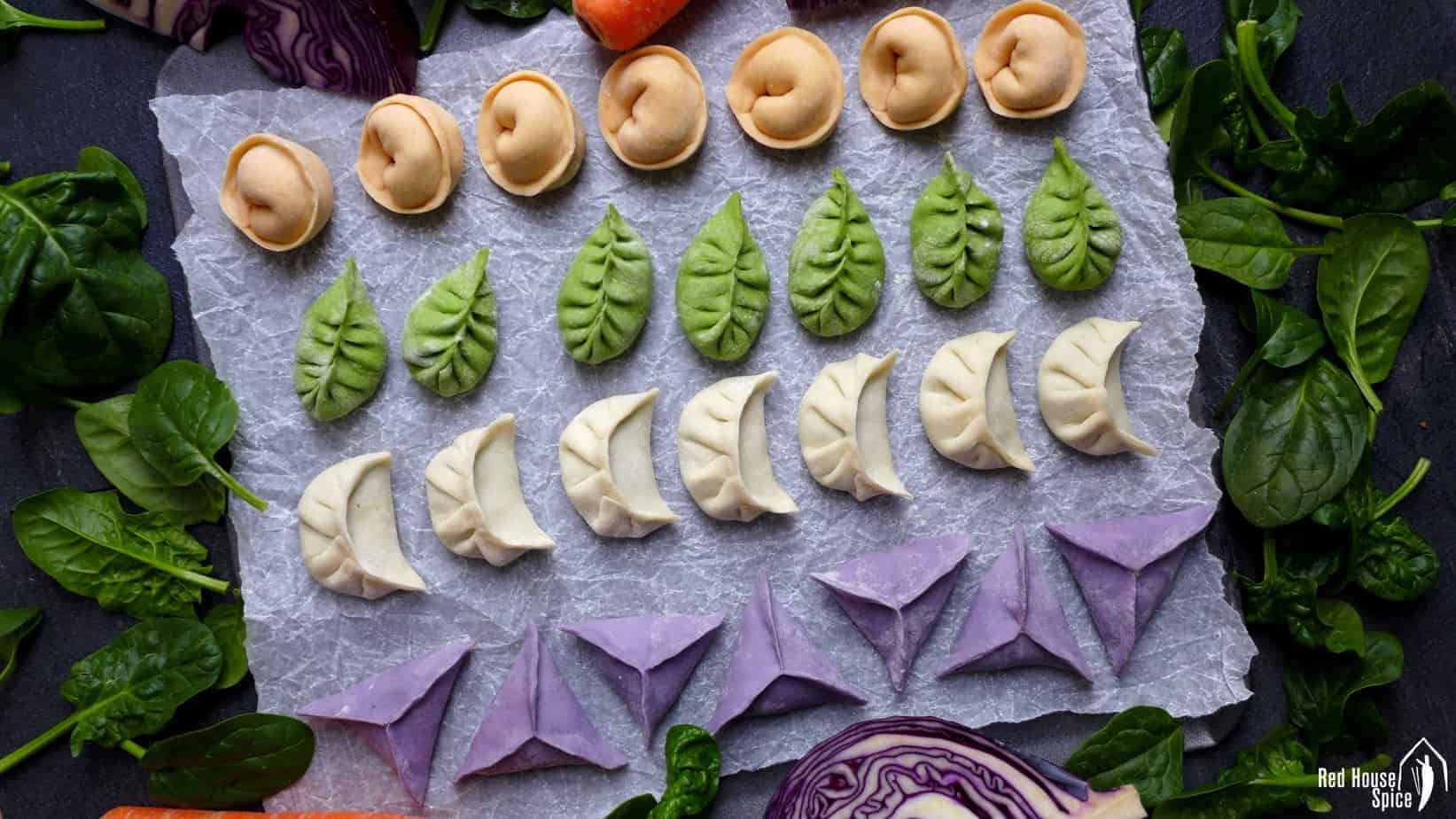
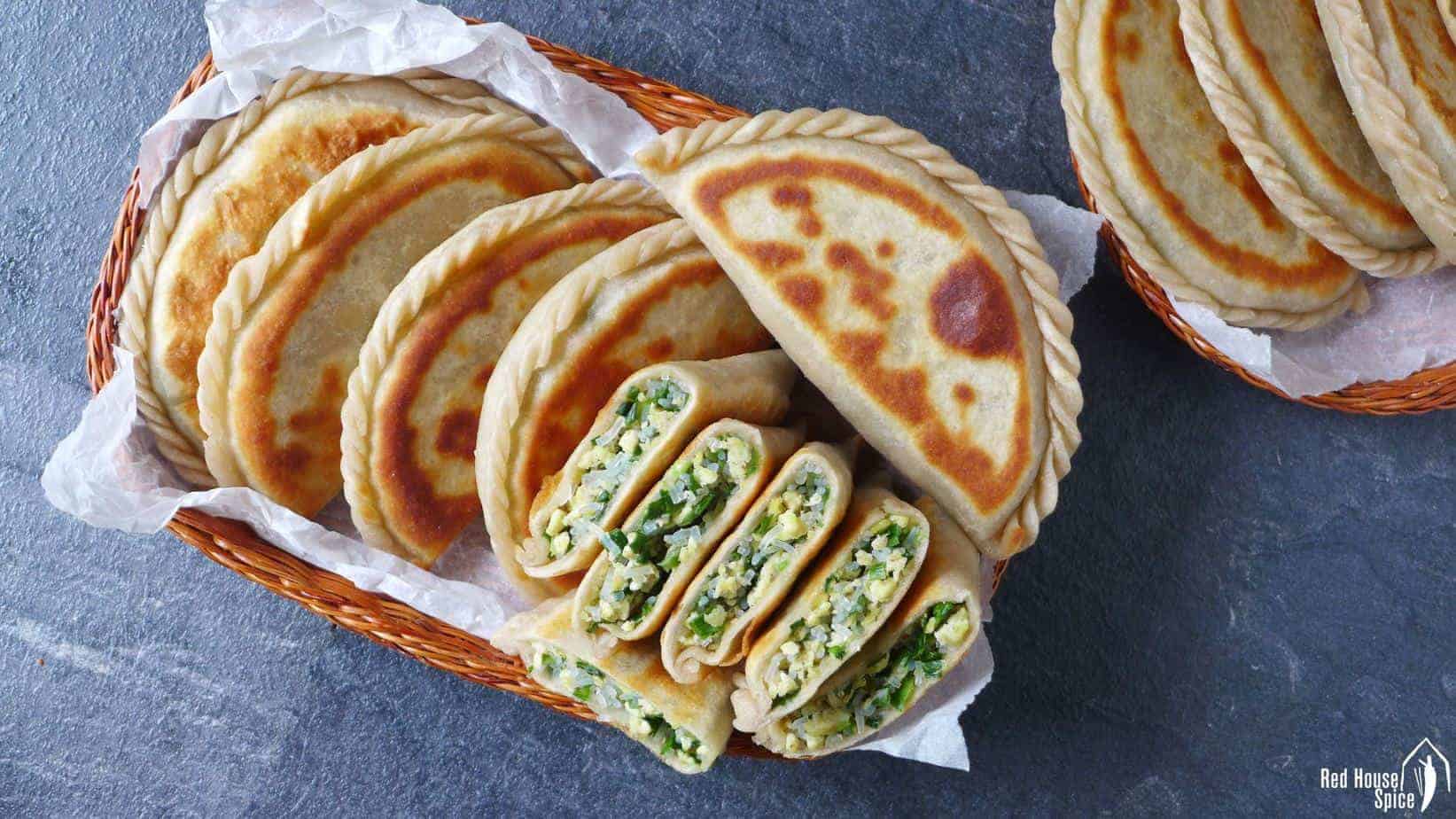
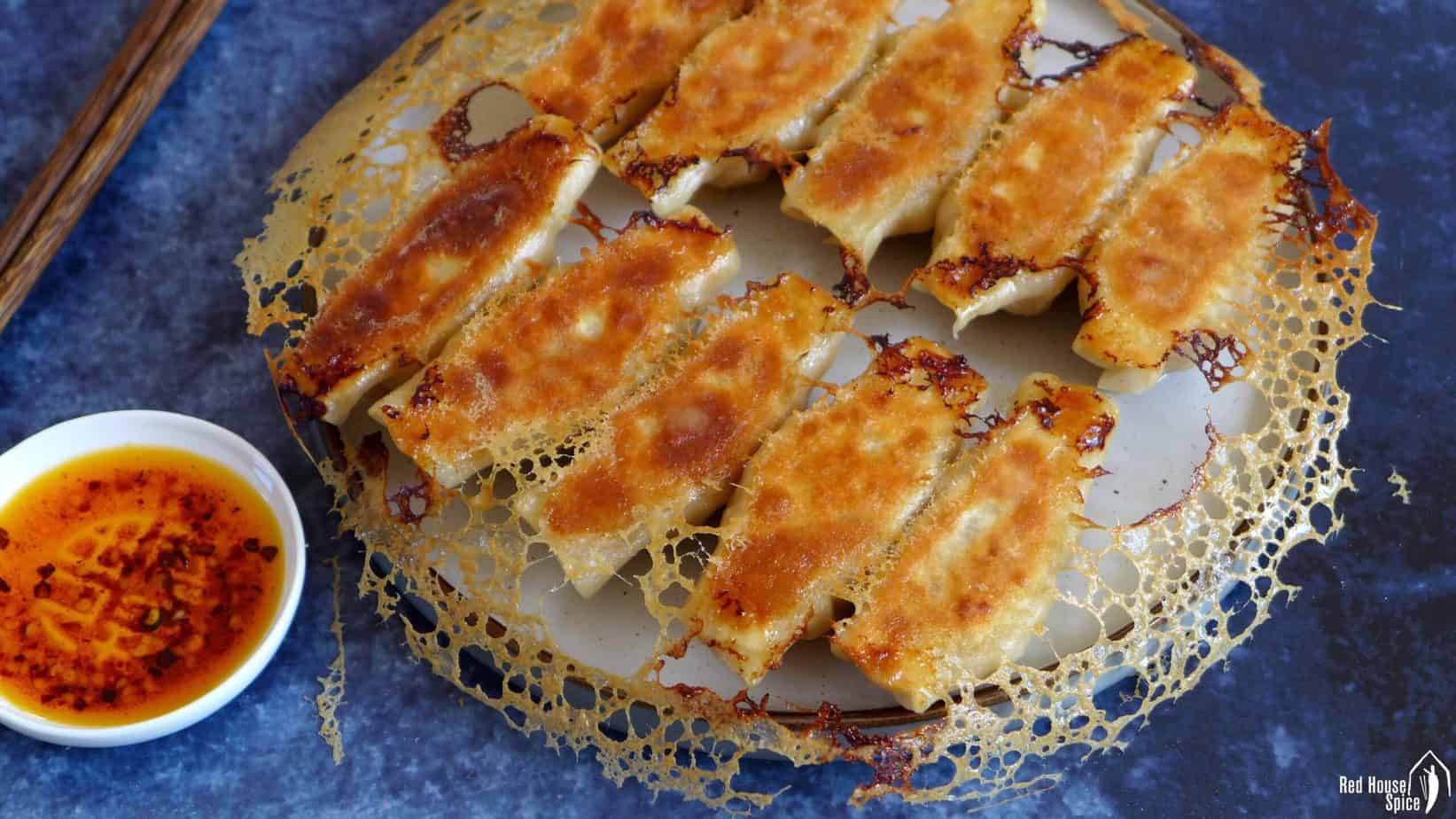
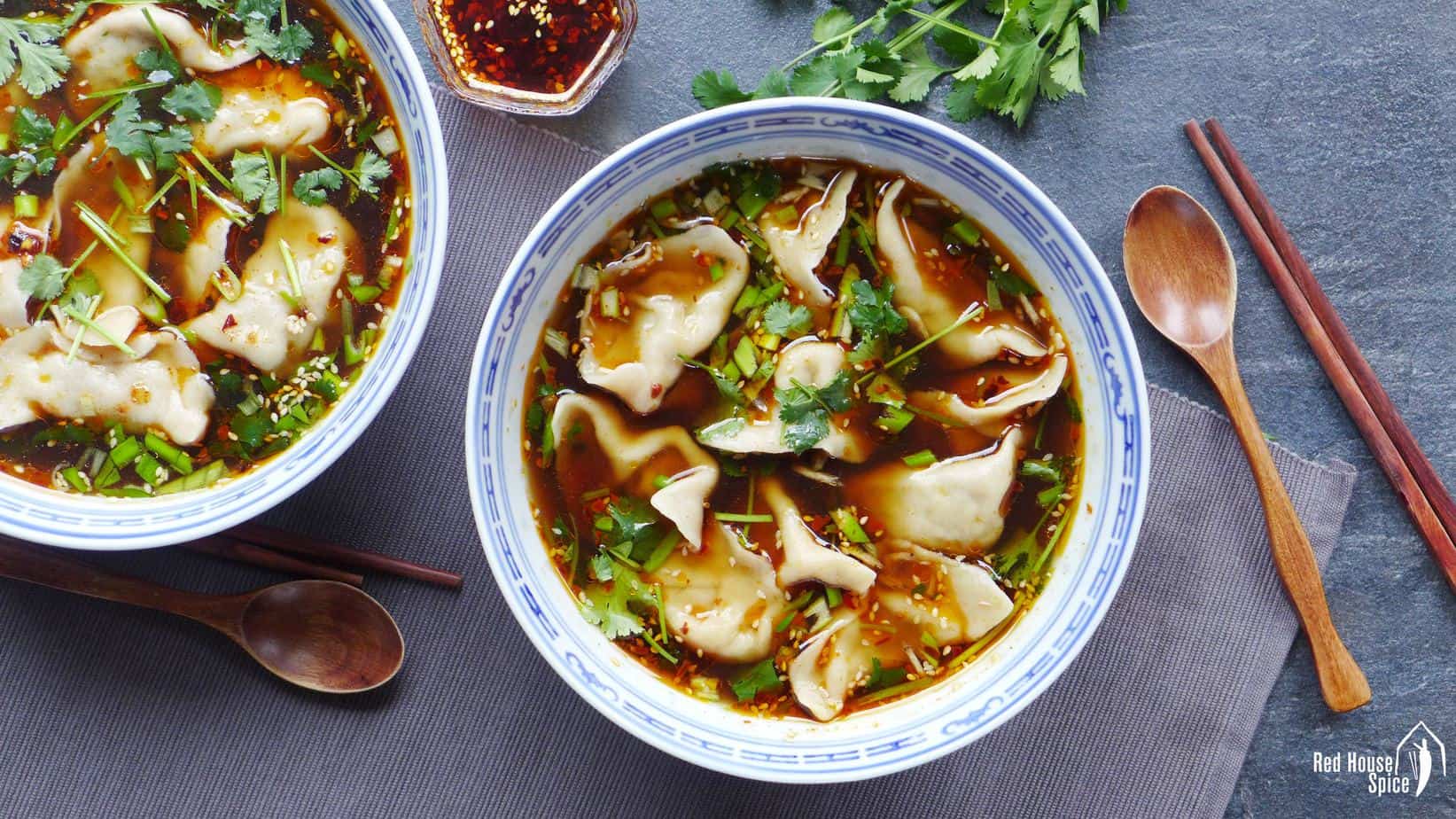
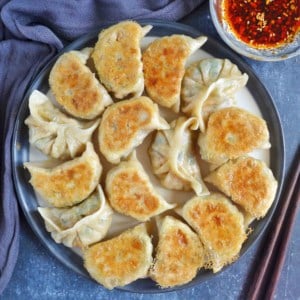
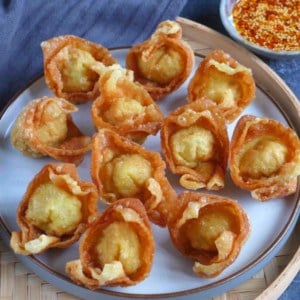
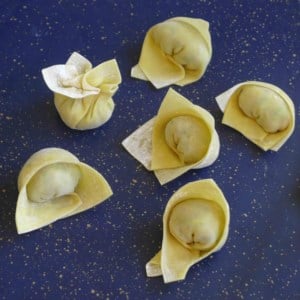
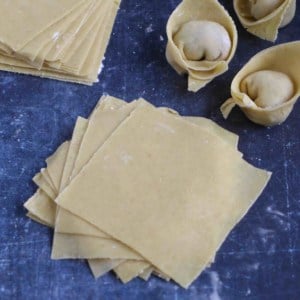
To be honest, I haven’t made the jiaozi yet, but I bought everything to make it tomorrow or the day after. Although I haven’t made it or seen the results, I gave you 5 stars because I also come from a home-eating jiaozi that was quite regular. I recognize your recipe and the ways you do things similar to my Mom and many a moment I was reminiscent of home with my family as a child. Thanks for everything.
So happy to know my post reminded you of your Mom’s cooking. I wish you a happy time in the kitchen creating your childhood food!
I’ve been using your recipes for a while now and I just want to leave heartfelt thanks for sharing your expertise with us. The jiaozi I make based on your recipe have always turned wonderful and my friends love them as well.
I keep recommending your recipes to whoever compliments my cooking <3
I’m so happy to hear that! Thank you Kat for sharing my recipes with others.